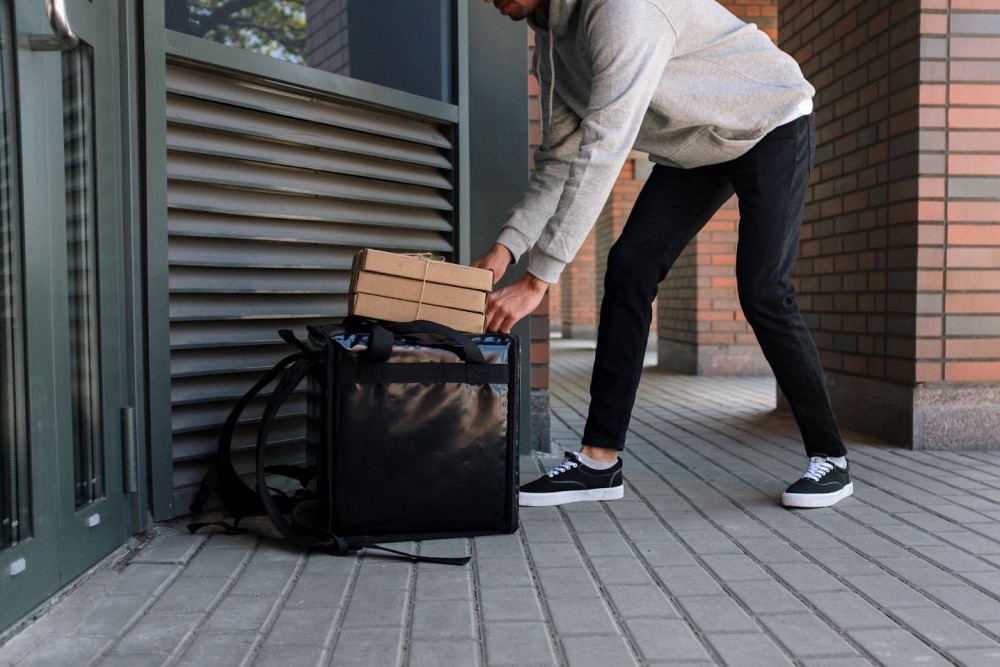
At its core, a no contact delivery refers to a process where goods or services are delivered to a customer without any physical interaction between the customer and the delivery person. Instead of a traditional face-to-face exchange, the delivery is completed with minimal or no direct contact, ensuring a safer and more efficient experience.
How It Works
In a no contact
delivery, the process typically involves the following steps:
- Ordering
The customer places an order for products or services through an online platform or app. - Preparation
The items are prepared, packaged, and made ready for delivery. - Notification
The customer is notified about the estimated delivery time and any relevant updates. - Delivery
The delivery person arrives at the designated location and leaves the package at the customer's doorstep or a preferred location. - Confirmation
The customer receives a notification, often through the same platform, confirming that the delivery has been completed.
Benefits of No Contact
Delivery
The rise of No contact
delivery has brought about several advantages for both consumers and businesses:
- Safety
No contact
delivery helps minimize the risk of spreading illnesses, providing a safer option for both customers and delivery personnel. - Convenience
Customers can receive their orders without having to be physically present or disrupt their daily activities. - Flexibility
This approach offers greater flexibility in choosing delivery times and locations. - Peace of Mind
Customers can have peace of mind knowing that their orders are being handled with care and delivered in a secure manner. - Efficiency
No contact
delivery streamlines the process, making it faster and more efficient for both parties.
Industries Utilizing No Contact
Delivery
No contact
delivery has found applications across various industries:
- Food Delivery
Restaurants and food delivery services have embraced this model to ensure the safe delivery of meals to customers. - E-Commerce
Online retailers useNo contact
delivery to provide a seamless shopping experience. - Grocery Delivery
Grocery stores offer this option for customers to receive their groceries without entering the store. - Package Delivery
Courier services utilizeNo contact
delivery for packages and parcels. - Pharmacy Services
Prescription medications and medical supplies can be delivered to customers' homes using this method.
Implementing No contact
Delivery
Businesses that wish to implement No contact
delivery can follow these guidelines:
- Communication
Clearly communicate the option ofNo contact
delivery to customers during the ordering process. - Instructions
Provide instructions on where customers can expect their deliveries to be left. - Digital Payments
Encourage the use of digital payment methods to eliminate the need for cash transactions. - Safety Measures
Equip delivery personnel with the necessary safety equipment, such as masks and gloves. - Feedback
Gather feedback from customers to continually improve theNo contact
delivery experience.
In an increasingly digital world, No contact
delivery has emerged as a practical and efficient solution for ensuring the safe and convenient delivery of goods and services. This approach not only aligns with modern consumer preferences but also promotes safety and peace of mind for both customers and businesses.
EDITORIAL POLICY
The Flash List is dedicated to providing trustworthy editorial content by maintaining strict ethical standards, journalistic integrity, and credible professionalism regardless of any remuneration as working media. The Flash List is not affiliated with third-party companies mentioned and makes no endorsement or guarantee expressed or implied. The preceding article, which contains affiliated link(s) for which compensation was received, is intended for informational reference only and does not constitute advice of any kind. Moreover, a qualified professional should be consulted regarding any lifestyle consideration, medical treatment, or monetary transaction, etc. Content is published in accordance with USFTC regulations and terms and conditions.
MORE ON THE FLASH LIST
































